Breakfast mistakes to avoid
A satisfying breakfast could make your whole morning—if you avoid these mistakes. Here’s how to ensure your first meal of the day sets you up for success.

You wait too long to eat
If you never wake up hungry, take a look at your eating habits—you might be eating too much at night, says registered dietitian nutritionist Amy Shapiro, founder of Real Nutrition NYC. Even if you don’t feel like eating, it’s a good idea to get something in your system (just a banana will do the trick) within an hour and a half of waking up to jump-start your metabolism and keep yourself from getting hungry later, she says. (Be sure to check out this healthy breakfast quesadilla recipe this dietitian loves.)
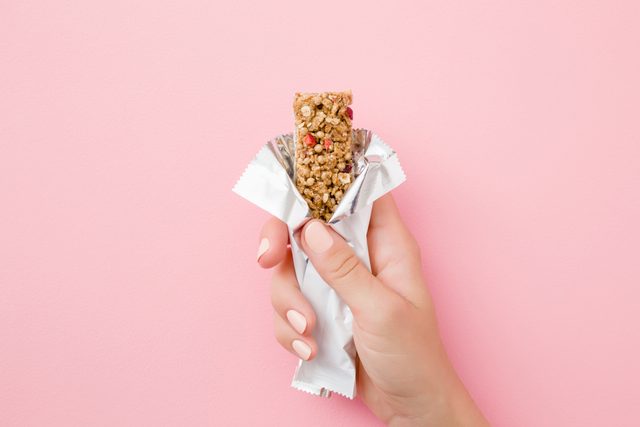
You grab and go
If you are in a rush, you might be tempted to grab a granola bar or bagel. But if you don’t focus on what you’re eating, you could end up unsatisfied. “When we’re not paying attention to what we’re eating, we’re more likely to feel hungrier soon after,” says Andrea Moss, founder of Moss Wellness, a certified holistic nutrition coach through Columbia University’s Teachers College, in partnership with the Institute for Integrative Nutrition. “Eating on the go can lead to impaired digestion from quick chewing.” Plan a nutritious meal ahead of time, she says.
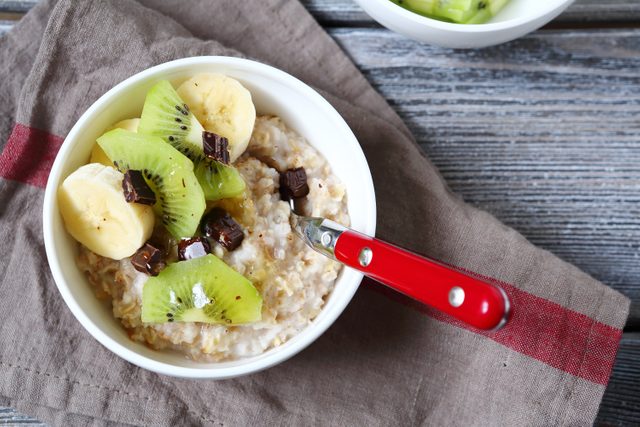
You eat instant oatmeal
Oatmeal is praised for aiding weight loss, reducing cholesterol, and delivering a healthy dose of fiber. Sounds like a healthy choice, right? Not necessarily. “Those little microwaved packets are often filled with simple sugars that can lead to weight gain, lower energy, and reduced health,” Moss says. “Whole, rolled oats (bonus points for steel-cut oatmeal!) are a different oatmeal entirely.” Rolled or steel-cut oats digest slower, keeping you full longer and steadying your blood sugar levels, she says.
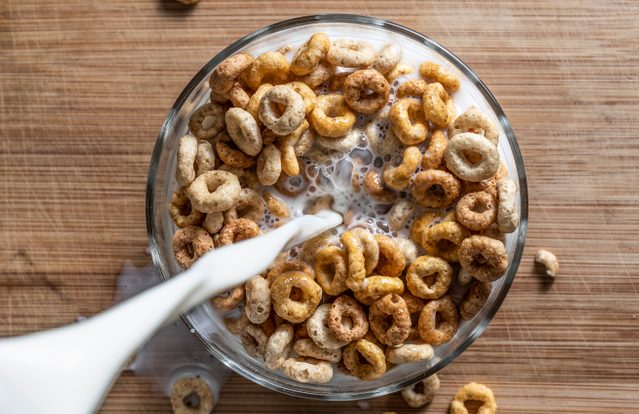
You pour a bowl (or three) of cereal
Cereal can be a surprising sugar bomb. Depending on the brand, more than half of your bowl could be made of sugar, and it’s often paired with little protein to keep you full. Eating that much sweet stuff at once will spike your blood sugar, making your tummy rumble when your blood sugar levels come crashing down, Shapiro says. That’s why nutritionists recommend these cereal brands. Plus, if you’ve ever measured a portion of cereal, you probably know that the serving sizes are smaller than a typical bowl. “Most of my clients who eat cereal pour twice the amount they should and still don’t feel satisfied,” Shapiro says. (Check out this portion control trick to pour the perfect bowl of cereal.) If you can’t give up your daily bowl, find a brand with at least five grams of fiber and less than eight grams of sugar, she says.

You always opt for skim milk
Fat-free milk might seem like a virtuous choice, but what you save in calories is lost when your body can’t absorb its nutrients. “The vitamins milk is fortified with are fat-soluble, so it’s important to have some fat for those nutrients,” Shapiro says. She recommends using one or two percent milk, or unsweetened almond milk. Never tried the almond variety before? There are plenty of health benefits of almond milk that make it worth a try.
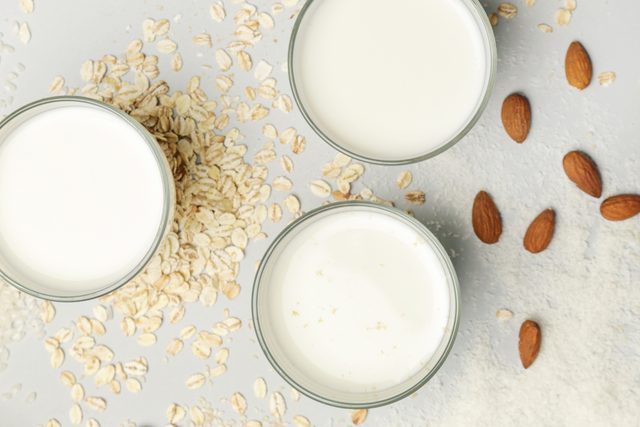
You use sweetened nondairy milk
Soy, almond, and coconut milk can be healthy alternatives to dairy milk—if you buy versions without added sugar. But ask your barista if it’s an unsweetened version, or you could be sipping more sugar than you realize. “Sweetened soy milk has sugar in it, and no one is counting that,” Shapiro says. “Don’t drink your calories.”

You don’t eat enough proteins and healthy fats
Protein gives you energy, while healthy fats keep you full and squash cravings, Moss says. “The old adage ‘a calorie is a calorie’ is false. It’s what is makes up those calories that’s most important,” she says. “The best, most filling and satisfying breakfasts (not to mention great for weight loss) contain healthy fats and proteins.” Shapiro recommends eggs, cottage cheese, nut butter, and yogurt to give your breakfast a protein boost. You can also construct your own healthy breakfast quesadilla.

You drink coffee first
Coffee on an empty stomach can be too acidic for your body, and pairing it with your morning meal could set you up for overeating throughout the day, Moss says. “It can send the signal that we’re ‘full’ and don’t need to eat for another couple of hours,” she says. “This can mess with hunger levels, energy levels, focus, and concentration later on in the day.” Reach for your first cup after you’ve eaten.

You consider coffee to be calorie-free
Unless you order your coffee black, beware of the calories, carbs, and sugar in your morning cup. Even a small skim latte, which is mostly milk with just a shot or two of espresso, has about 140 calories, Shapiro says. And once you add sugar or flavor pumps, that number will rack up even more. “A skinny latte isn’t so skinny,” she says. “The calories add up quickly.” Even if you think you can’t drink coffee without three sugar packets, try adding one at a time until you like the taste—you might be surprised by how little sweetener you need, Shapiro says. She also recommends cinnamon for a calorie-free natural sweetener that can help regulate your blood sugar. You can make your coffee habit healthier with these 11 little changes.
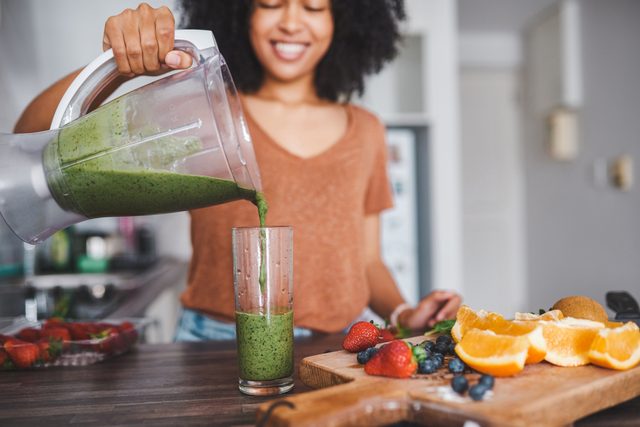
You overload your smoothie
A smoothie can quickly turn into a sugar bomb if it’s made with the fruit juices and sweeteners that juice bars tend to rely on, Moss says. You’ll get a quick energy boost from the sugar rush, but once your blood sugar levels crash, you’ll feel sluggish again. To make a healthy smoothie that cuts down on the sugar, reach for whole fruits instead of juices, Moss says. But be careful of making your fruit additions a free-for-all, because the calories add up when you toss in too many, Shapiro says. Just one large banana, for instance, has more sugar and almost twice the calories as two servings of fruit. “People think they’re eating healthy, but it’s just increasing calories,” she says. “Pick one fruit for your smoothie.”
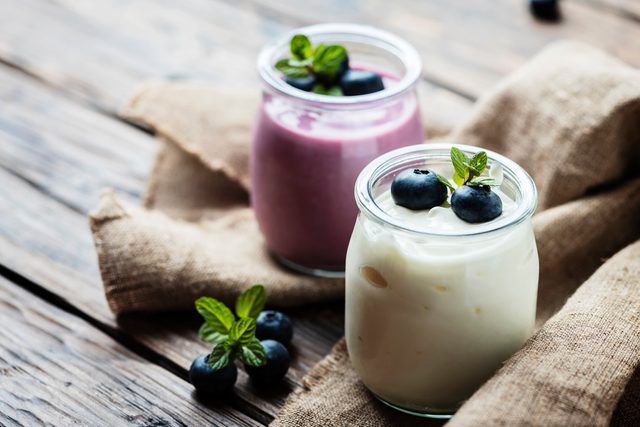
You choose nonfat yogurt
Fat isn’t the main enemy to weight-loss success—sugar is. “Contrary to the common fear of dietary fat leading to body fat, the very opposite is usually the case,” Moss says. “Fat is digested slowly by the body and helps decrease the rate at which we digest and break down carbohydrates.” But to make up for a lack of fat, nonfat yogurts are often loaded with sugary syrups or artificial sweeteners. Instead of buying flavored yogurts, try an unsweetened low- or full-fat version and add fresh fruit, a bit of dry fruit, or a couple teaspoons of honey for a more satisfying breakfast.
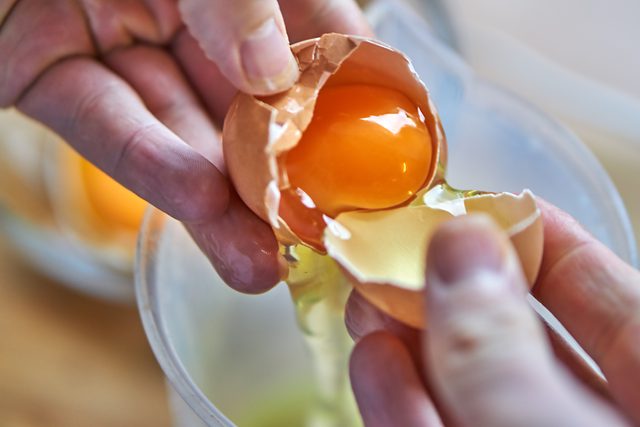
You eat egg whites instead of whole eggs
Egg whites are a low-fat, low-calorie source of protein, but the yolk packs in iron, vitamin B, and vitamin D. “So much of the nutrition lies in the yolks,” Shapiro says. “Go for the whole egg. It keeps you full longer and keeps you satisfied. It’s a complete protein.” The exception is when you’re dining out, she says. Restaurants often load meals with oil and butter, so holding the yolks could save you calories. If you’re worried about cholesterol, you might want to limit yourself to five to eight eggs a week, though some research shows they might not raise your cholesterol levels, she says. If you’re ready to embrace the yolk and all, give one of these 54 egg recipes a try.
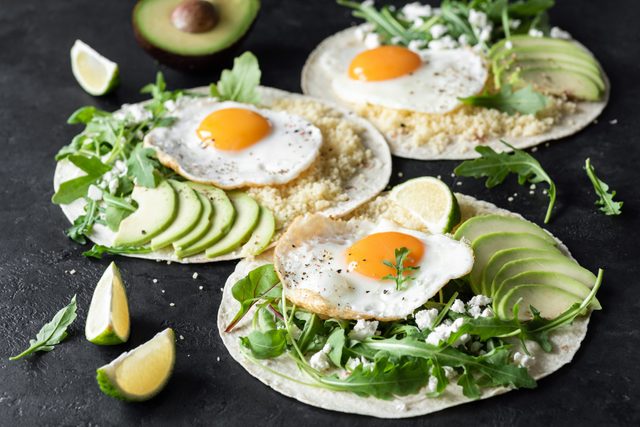
You miss a chance to include produce
“I advocate for plants in every meal,” Shapiro says. She recommends sneaking in a serving of fruits or veggies by cooking spinach or tomato in your eggs, adding avocado to your breakfast sandwich, or eating half a banana with toast. Or try to add these healthy vegetable power foods.